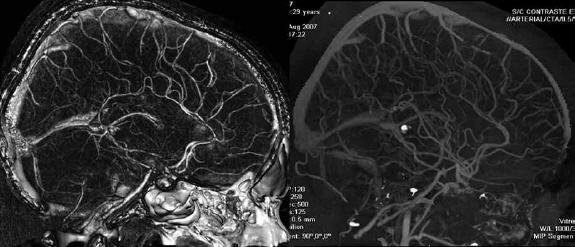Hello everyone, Today I want to talk about a clinical problem that I had the opportunity to observe, and it was like a simple blow that can end your life in a few hours. I was in the clinic and there was a more or less adult person, with a blow so small that I only needed a medication for pain. But everything was so fast that they did not do any MRI medical exam. And after a few minutes, the patient had an attack that caused him to shed blood from his nose. He had an intracranial hemorrhage. So that's my subject today.

First of all. What is intracranial hemorrhage?
Intracranial hemorrhage, as I had explained a moment ago, occurs very rapidly and there is a sudden rupture of a blood vessel within the brain, which produces bleeding that accumulates in the brain parenchyma and produces sudden intracranial hypertension and a probable hemorrhagic stroke . Intracranial hemorrhages are medical emergencies associated with high morbidity and mortality. The tomography is the most sensitive test for the diagnosis of intracerebral hemorrhage
Non-traumatic brain bruising accounts for approximately 4-14% of the causes of cerebral vascular accidents. They have a high mortality rate, approaching 40%. The greater the hemorrhage, the worse the prognosis. They have a greater functional recovery than in cerebral infarction.
How does this happen?
Intracerebral hemorrhage occurs when the patient has chronic arterial hypertension weakens a small artery, causing its rupture. In this case the patient presented a very small blow but just in the place of the artery that caused a blood spill that did not end very well.
Other less frequent causes include congenital anomalies of the blood vessels, lesions, tumors, inflammation of the blood vessels (vasculitis), bleeding disorders and the use of anticoagulants in doses too high. Bleeding disorders and the use of anticoagulants increase the risk of death due to intracerebral hemorrhage.
What symptoms could be prepped at that time?
Although it is a bit difficult to detect that a hemorrhage may be occurring, as it attacks suddenly and most people associate it with a simple headache. Here I leave some features.
- Tingling, weakness, sudden numbness, or paralysis of the face, arm, or leg, particularly on one side of the body
- Sudden, severe headache
- Difficulty swallowing or seeing
- Loss of balance or coordination
- Difficulty understanding, speaking (dragging words, confusion), reading, or writing
- Changes in the level of consciousness or lucidity, marked by stupor, apathy, lethargy, numbness, or coma
How is intracranial hemorrhage treated?
Any type of hemorrhage inside the brain is a medical emergency. It is important to take the person in question to the urgencies of a hospital immediately to determine the cause of the hemorrhage and to be able to begin medical treatment.
If a stroke has occurred, the cause (bleeding or blood clot) must be determined so that appropriate treatment can be started during the first three hours. Starting medical treatment so quickly can minimize brain damage, which improves the patient's chances of recovering.
A surgical operation may be necessary in the following situations:
- A hemorrhage caused by a broken artery requires immediate decompression of the brain to release the pooled blood and repair damaged blood vessels. The decompression can be done by means of a burr hole, a craniotomy incision, or a craniotomy (opening the cranial cavity).
- A hemorrhage caused by a ruptured cerebral aneurysm that requires the aneurysm to be cut through a surgical craniotomy procedure, as soon as the patient's neurological condition allows it.
Conclusion
Now, since you could see how complicated the intracranial hemorrhage is. I'll finish telling you how I was with that patient. That patient was my brother who played baseball. They took him to my clinic because he was dizzy. They applied a series of medications and it felt good, but after a while he had to be transferred from the emergency room for what he was already on, and they had to operate. It was a very strong operation from which it went well. To not extend the story anymore. At this time he is stable but has to regain consciousness after the initial episode, go to a rehabilitation therapy to achieve a substantial recovery.
So let's start being very careful since any event can make us lose our lives in the second numbers.
The subject was a bit short, but direct. Next, I leave the references if you want to instruct a little more. And as always a video
Information Source
- Delgado, N. Aymerich, M. Herrera. Hemorragia intracerebral. Servicio de Neurología. Hospital de Navarra. Pamplona
- Kushner D (1998). "Mild Traumatic Brain Injury: Toward Understanding Manifestations and Treatment"
- van Gijn J, Kerr RS, Rinkel GJ (2007). "Subarachnoid haemorrhage
- Ref 1
- Ref 2
- Ref 3
Thank you for taking the time to read this publication. I hope you have a happy day, see you in the next. Do not forget to leave a comment about what you thought, thank you very much.@juanjdiaz89



